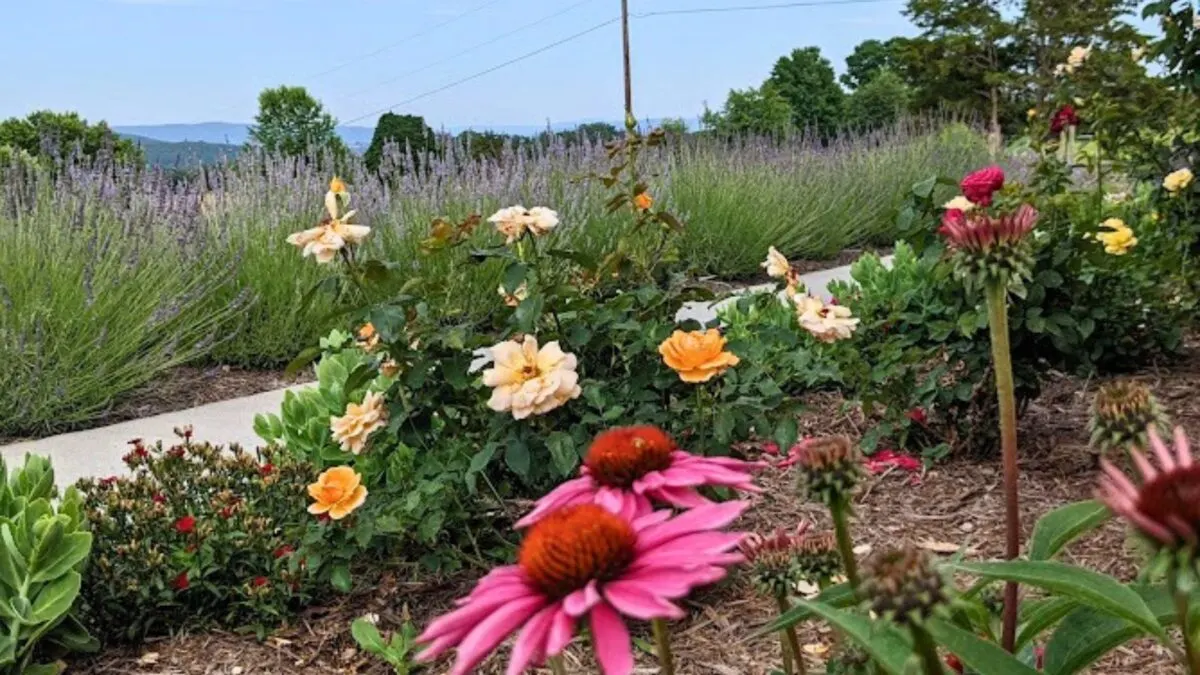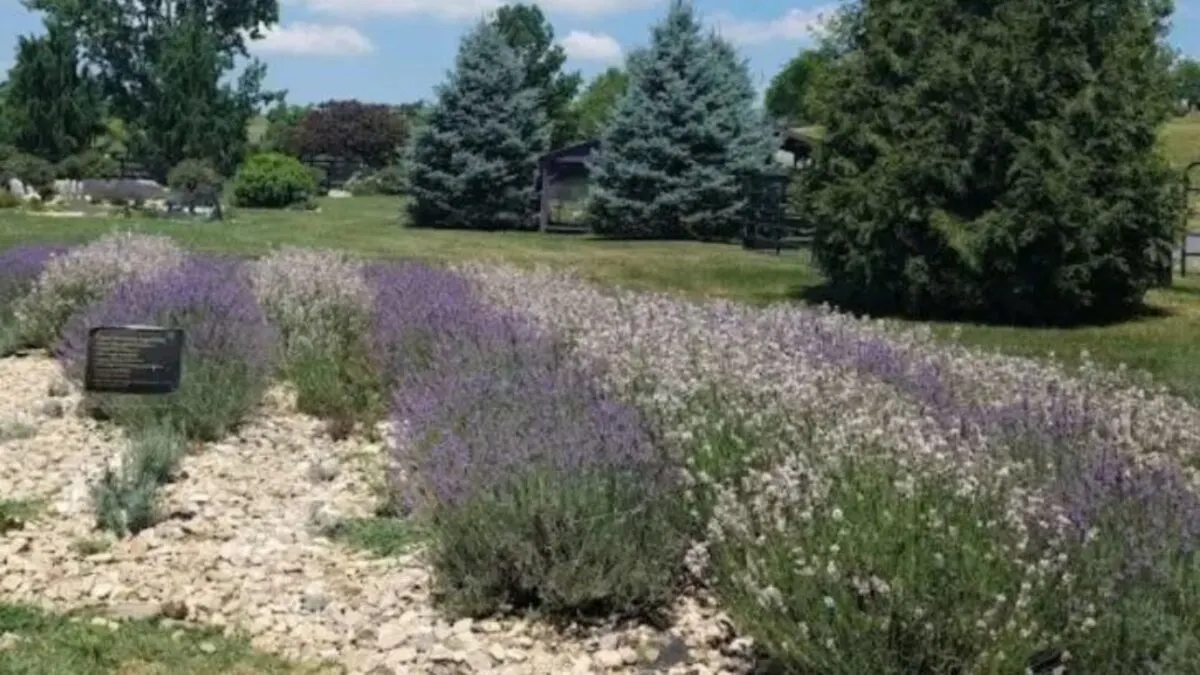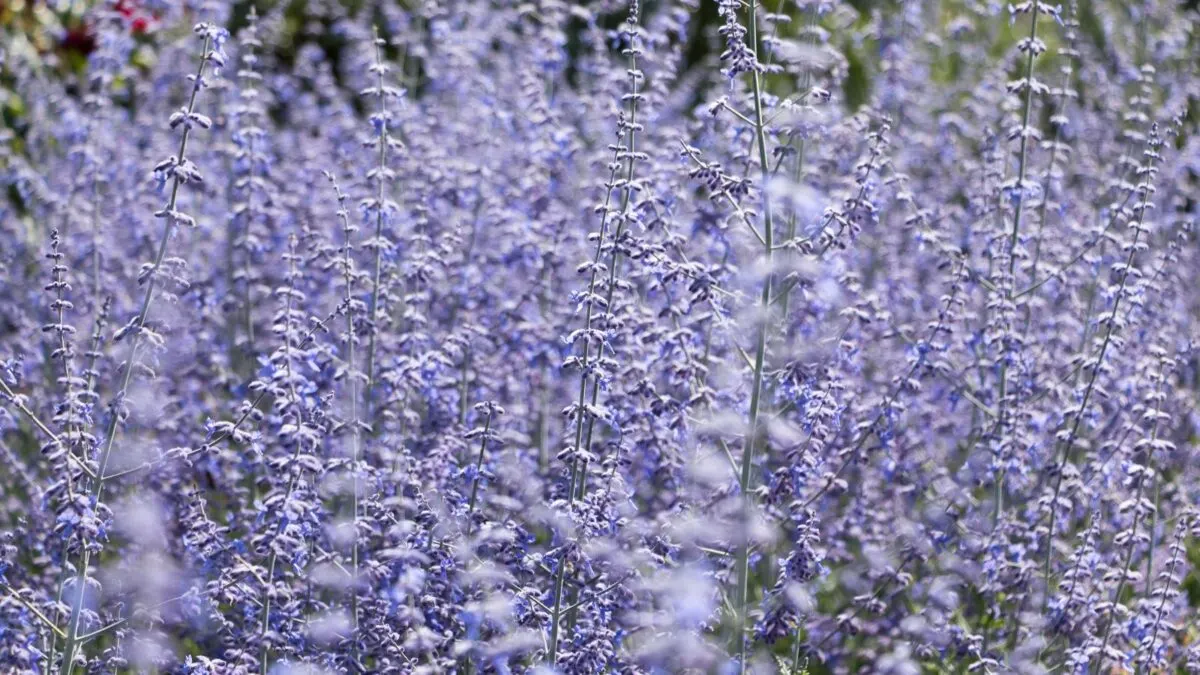Though commonly planted in herb gardens, lavender has many beautiful roles in landscaping. It comes in various hues, and the many varieties have different bloom times for a summer full of fragrant flower spikes. Landscaping with lavender results in stunning displays of flowers and calming aromas that waft up as you brush past the lovely plants. Learn how to take full advantage of this herb in your landscape with our tips below.

Landscaping with Lavender

You can, of course, plant lavender wherever you like, so long as its cultural needs are met. However, a bit of dreaming and planning will help you make the best use of lavender in landscaping for stunning results.
First, consider the aforementioned cultural needs. All lavender varieties grow best in full sun and average to poor soils with excellent drainage. Many lavender problems can be traced back to excessive moisture, so avoid planting lavender in wet areas.
Learn all you need to know about growing lavender
Additionally, different types of lavender have varying levels of hardiness. English lavender (Lavandula angustifolia) and lavandin (L. x intermedia) varieties thrive in areas as cool as USDA zone 5. French lavender (L. dentata) and Spanish lavender (L. stoechas), on the other hand, typically overwinter only down to zone 8, though in cooler areas, they can be grown as annuals or planted in pots to be moved indoors during winter.
Of course, you will also want to think about flower color and bloom time. In addition to its namesake purple, lavender comes in hues ranging from white to pink to deep purple. Some varieties, typically Spanish lavender, bloom as early as May and will bloom repeatedly if deadheaded. Others bloom in late summer, usually belonging to the lavandin group. Some English lavender blooms midseason, while others bloom even later than lavandins.
Once you have considered the growing requirements and the plants’ appearance, how do you incorporate them into the landscape? Here are some beautiful ideas!
1. Create a sensory garden

Sensory gardens engage all five senses: sight, touch, taste, hearing, and smell. Colorful flowers are an obvious choice for sight, while soft plants like lamb ears are a delight to touch.
Everything should be nontoxic, though herbs, fruits, and vegetables can be planted specifically to engage taste.
Rustling grasses or even windchimes provide relaxing sound. And fragrant lavender, of course, is wonderful to smell. It’s also colorful (sight) and edible (taste), and touching it enhances the scent.
2. Grow lavender in containers

Lavender makes an excellent addition to container gardens. Mix individual lavender pots with other herbs and flowers for a stunning display on a patio or deck. Varied container sizes and colors can add to the visual interest, though you may want to stick to a color palette or other visual theme.
Alternatively, plant lavender in an extra-large pot and surround it with smaller annuals for a lovely mixed planter.
Here’s how to care for potted lavender plants.
3. Plant a lavender hedge

Although it won’t serve as a privacy screen, a lavender hedge makes a lovely border and is decidedly more colorful and fragrant than boxwoods!
Annual pruning keeps the foliage neat and rounded, and the silvery leaves stay on the plants year-round for off-season interest. Use a lavender hedge to edge flower beds, line a vegetable garden to attract pollinators, or create other low borders throughout the landscape.
4. Add fragrance to a cottage garden

Not only are cottage gardens lovely, but they are also fun to potter around in. These informal, practical plots welcome guests up to your front door with masses of flowers, herbs, and sometimes even vegetables.
Being both pretty and useful, lavender is a classic addition to cottage gardens. Make sure to plant some near the path, around the door, or even under a window to enjoy its fragrance and beautiful flowers.
5. Consider companion plants

Though lavender is lovely all on its own, adding companion plants only enhances its beauty. In a vegetable garden, companion plants offer numerous benefits to each other, while in a flower garden, they share growing requirements and visually complement one another.
You’ll want to pair lavender with plants that also thrive in full sun and well-drained soil. Good companion plants for lavender include purple coneflower, roses, sage, marigolds, and rosemary.
6. Establish a pollinator garden

Among its many benefits, lavender attracts bees, butterflies, and other pollinators with its vibrant, fragrant blossoms. This makes it an excellent choice for a pollinator garden.
In addition to lavender, choose native flowers and other noninvasive plants that draw in pollinators. Remember to include early-blooming flowers like violets and late-summer blooms like asters.
Water sources and “bee hotels” can also be fun — and valuable — additions to pollinator gardens.
7. Line a path or seating area

Lavender deserves to be placed where its wonderful, calming scent can be most thoroughly enjoyed. I love trailing my hand through tall lavender flowers to have their lovely smell waft up around me.
Line a path with lavender plants so that their leaves and flowers spill onto the walkway to be brushed against as people walk by, releasing their sweet fragrance. You can also plant lavender close to a bench or up against a patio.
8. Beautify a rock garden

Though rock gardens have a stark beauty all their own, it can be nice to add a pop of color and a touch of greenery here and there.
Because lavender thrives in dry environments, it grows well in rock gardens and provides both lovely greenery and colorful blooms. Its silvery green leaves and purple flowers pair beautifully with the gray and brown hues of rocks and stones. Plus, one of the most popular lavender mulches is pea gravel!
Need a few more ideas for landscaping with lavender? Try these:
- Use it in a mixed herb garden
- Mix with roses
- Use as accent plants
- Create lavender topiaries
- Plant a lavender slope
- Surround your water features with lavender
- Use as the focal point
Lavender is a beautiful landscaping plant, and its uses in the garden are myriad. I hope the tips and ideas above have given you inspiration and useful information to incorporate lavender into your own landscaping for a yard and garden you love.
Learn how to grow lavender for fun and profit.
Best Lavender Farms To Visit This Summer

There’s nothing like being surrounded by calming, sweetly scented, purple lavender flowers. The bees’ hum and the butterflies’ dancing make it an amazing experience. Plan to take your family to a lavender farm this summer for an exquisite sensory experience.
This directory of lavender farms by state will help you find lavender fields nearby.
9 Plants With Flowers That Look Like Lavender

If the growing conditions in your area don’t agree with lavender (too much shade or the soil doesn’t drain well), these flowers that look like lavender will be just as beautiful.

